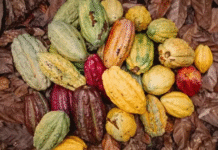The government requested the cotton corporation in India to buy cotton in large quantities from farmers and give it to the mills. The textile industry pressed the government to look into cotton arrivals in the market, leading to an increase in the expenditure on raw materials and requested long-term policy measures.
The chief advisor, K Venkatachalam from the Spinning Mills Association, Tamil Nadu, told the BusinessLine that moisture conditions do not affect cotton prices. Unwanted moisture and trash would lead to an additional 1% and minimum 3% loss, respectively, unlike the usual 3% loss.
Current scenario of cotton trading in India
Few industry experts observed that the personal interests of a few traders resulted in the availability of less quantity of cotton in the market. Traders have been checking the extra arrivals of cotton so that it can be stopped or stocked for future use.
Due to some malpractices, more than 90 bales of cotton are yet to arrive in the markets. Venkatachalam declared that due to the unethical behavior of a few cotton traders who are holding onto the raw material and not allowing industries to purchase them, only small quantities of about 20,000 bales come to the market. The report has been given to Business Journal.
As the cotton traders and a few other big companies are managing cotton trading, farmers and end-users are being inconvenienced.
Change in cotton trading terms
The trading industry requested the government to take off cotton from the list of merchandise traded on exchanges and allow access to the farmers and other mill traders.
The chief advisor stated to the journalists of BusinessLine that cotton was hoarded by people not connected to the textile industry for profits. Thus, textile traders want the CCI to buy cotton in large quantities from the farmers above the minimum support price and sell it to factories when needed. CCI has been advised against selling it directly to traders and factories.
Textile strikes against cotton rates
With the rise in the cotton and yarn prices, the weaving, knitting, dyeing, and stitching units of the textile industry in a few sections of Tirupur, Erode, and Karur districts and the import and export local market joined a two-day strike. These districts employ more than 10 lakh people in this industry.
A representative mentioned to the Hindu that it was impossible to buy and sell cotton at the same price due to spin mills running under 10% to 15% cash loss. It resulted in many mills closing down their operations. Increased cotton rates have also raised the prices of yarn and have taken up the working capital of mills, leading to serious financial strain.
Textile owners also participated in the two-day strike as increased cotton and yarn prices directly impacted their profits. Even though a few mills in Tamil Nadu had announced a rate of Rs 40 per kg in the price of yarn, it was not put into practice in the other states. Hence, the price rise was not universal.
IndiFoodBev — authentic, impactful and influential
An English-language food and beverage processing and packaging industry B2B platform in print and web, IndiFoodBev is in its third year of publication. It is said that the Indian food and beverage industries represent approximately US$ 900 billion in revenues which implies more than 20% of the country’s GDP. Eliminating the wastage on the farmside can help to deliver more protein to a higher number of the population apart from generating sizable exports. The savings in soil, seeds, water, fertilizer, energy and ultimately food and nutrition could be the most immense contribution that country is poised to make to the moderation of climate change.
To improve your marketing and grow sales to the food and beverage processing and packaging industry, talk to us. Our research and consulting company IppStar [www.ippstar.org] can assess your potential and addressable markets in light of the competition. We can discuss marketing, communication, and sales strategies for market entry and growth.
Suppliers and service providers with a strategy and budget for targeted marketing can discuss using our hybrid print, web, video, and social media channels to create brand recognition linked to market relevance. Our technical writers are ready to meet you and your customers for content.
The second largest producer of fruit and vegetables in the world is continuously expanding processing capacities and delivery systems with appropriate innovative technologies. We cover product and consumer trends, nutrition, processing, research, equipment and packaging from farm to thali. Get our 2025 media kit and recalibrate your role in this dynamic market. Enhance your visibility and relevance to existing markets and turn potential customers into conversations. Ask for a sample copy of our bi-monthly in print or our weekly IndiFoodBev eZine each Wednesday.
For editorial info@ippgroup.in — for advertisement ads1@ippgroup.in and for subscriptions subscription@ippgroup.in
Naresh Khanna – 10 February 2025
Subscribe Now













